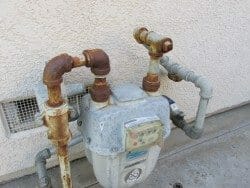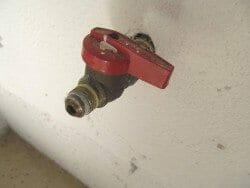Seismic shut-off valves on gas meters | Earthquake Safety
Home » Plumbing » Gas Meters & Valves »
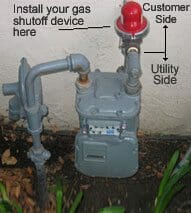
Seismic shut-off valves aka earthquake natural gas shut-off valves are an essential safety feature for homes in earthquake-prone areas, designed to automatically cut off the natural gas supply during significant seismic activity. This simple yet critical device helps prevent potential gas leaks and fires that can occur when earthquakes damage gas lines. For homeowners living near fault lines or in regions with a history of earthquakes, understanding and maintaining a seismic shut-off valve is a key step in safeguarding your property and loved ones against the risks posed by natural disasters.
What is a Seismic Shut-off Valve & What is the Purpose?
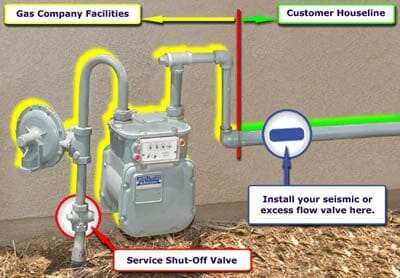

A seismic shut-off valve is a safety device installed on the natural gas line of a home or building. Its primary function is to automatically shut off the gas flow in the event of an earthquake or any extreme movement. This preventive measure is designed to reduce the risk of gas leaks and fires, which can result from the rupturing, cracking or disconnecting of gas lines during seismic activity.
How Does the Valve Work
Seismic shut-off valves are equipped with a mechanism sensitive to the vibrations caused by earthquakes. This mechanism typically consists of a metal ball or a similar object that is held in place under normal conditions. When an earthquake occurs, the ground motion causes the sensitive mechanism within the valve to activate. This activation dislodges the metal ball or triggering device from its resting position. Once the triggering device is dislodged, it moves to block the flow of gas through the valve. This immediate action effectively cuts off the gas supply from the main line to the property, significantly reducing the risk of gas leaks. After activation, seismic shut-off valves require a manual reset. This safety feature ensures that a professional can inspect the gas system for damage before the gas supply is restored, preventing gas from flowing into a potentially compromised system.
Watch these two example videos to see how the valves close in the case of an earthquake or any shaking. The first video shows a shut-off valve installation in a horizontal gas line, while the second video shows a vertical gas line installation.
When and Where Are They Needed?
Seismic shut-off valves are particularly needed in areas with a high likelihood of earthquakes. These regions typically lie along geological fault lines where seismic activity is more frequent. Building codes in many of these areas, including parts of California, Japan, and New Zealand, mandate the installation of seismic shut-off valves for new constructions and major renovations.

Checkout this real time earthquake map maintained by University of California Berkeley which shows the latest seismic activities. You may be surprised just how much activity there is occurring on a daily basis!
Homeowners and buyers should be aware of their local building regulations and the seismic risk profile of their area to determine the necessity of installing or maintaining a seismic shut-off valve.
How to Tell if You Have a Seismic Shut-off Valve
Identifying the presence of a seismic shut-off valve is relatively straightforward. Look for a small device installed on the natural gas line, usually near the gas meter or where the line enters the home. Seismic valves typically have a visual indicator or a reset mechanism on the exterior, distinguishing them from standard plumbing fittings. If uncertain, consulting with a licensed plumber or local gas company can provide clarification.
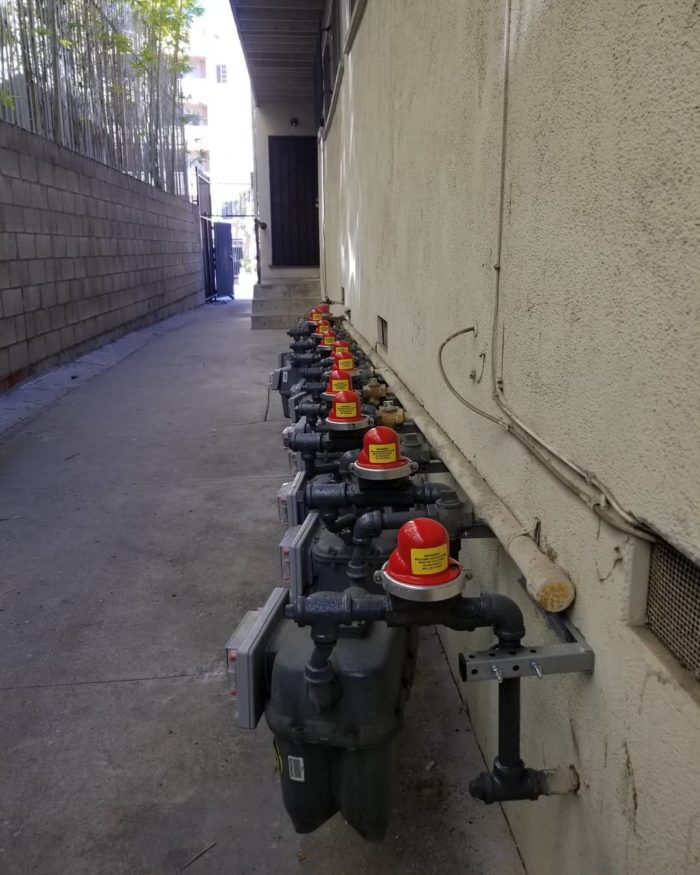
How to Tell if You Need a New One
Seismic shut-off valves are built to last and require minimal maintenance. However, certain conditions may necessitate a replacement:
- Age: If the valve is over 20 years old, consider having it inspected to ensure it still operates correctly.
- Malfunction: If the valve has been triggered by an earthquake or has been tampered with and no longer resets correctly, it may need to be replaced.
- Upgrades: Upgrading your gas system or making significant renovations might require a new or additional seismic shut-off valve to comply with current building codes.
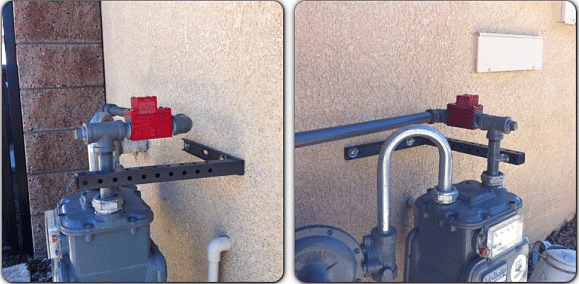
One Part of Earthquake Readiness
Seismic shut-off valves play a vital role in enhancing the safety of homes in earthquake-prone areas. By automatically shutting off the gas supply during an earthquake, they significantly reduce the risk of fires and explosions. Homeowners and buyers should be aware of the seismic risks in their area, verify the presence of a seismic shut-off valve, and ensure it is in good working order. If you are in an earthquake zone, make sure you and your family have a plan such as Ready.gov or the American Red Cross earthquake planning resources. Staying informed and prepared can make a significant difference in minimizing earthquake-related damages to your home.

